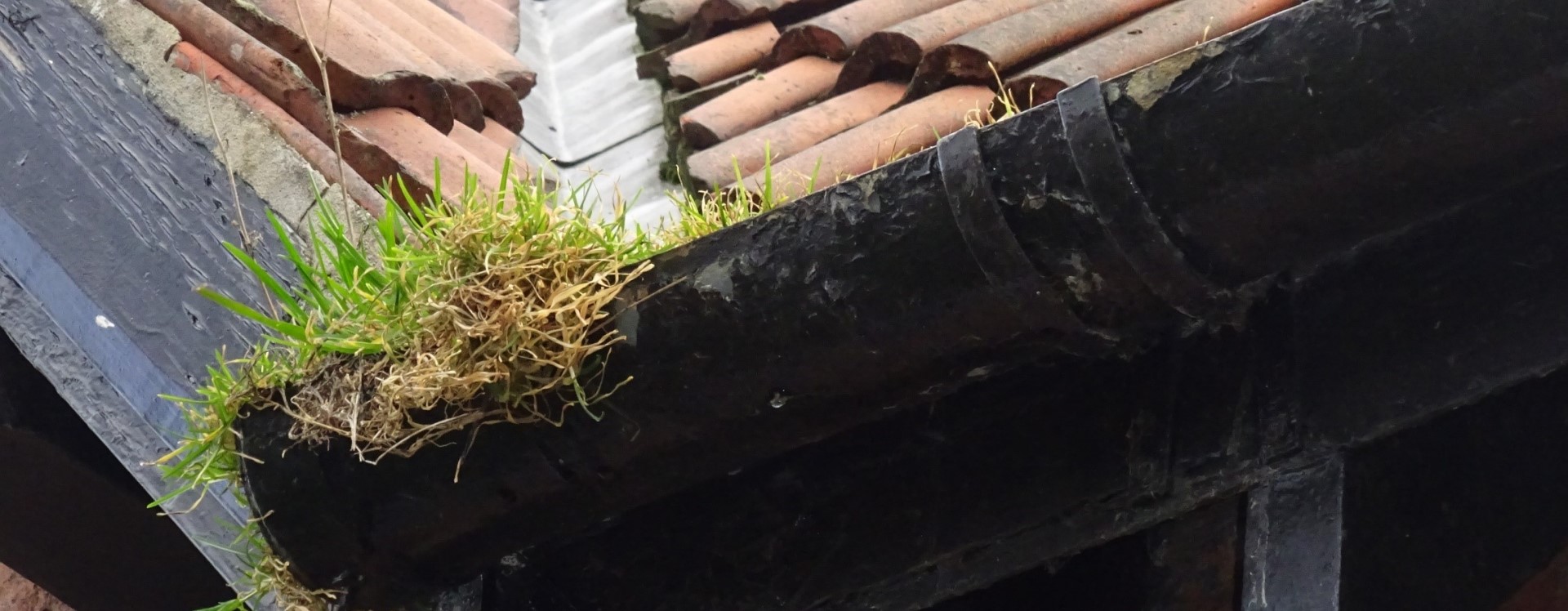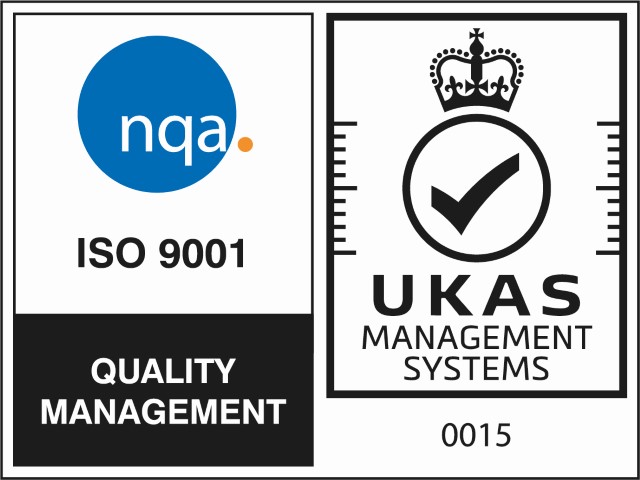Following the death of 2-year-old Awaab Ishak in December 2020, landlords, and particularly social housing providers, were put in the spotlight by Government ministers and the media regarding their approach to dealing with damp and mould cases in their housing stock.
Allcott Associates‘ Paul Cunniff was commissioned by a housing association to inspect a sample of their stock in which mould and condensation issues had been reported on multiple occasions over the past two years.
His brief was to assess the condition of the property, the levels of ventilation, heating and insulation, and to identify the causes of damp, such as leaking gutters, or ground levels above the internal floor level. We produced a report for each property, with photographs, findings, and recommendations. We also assessed the air quality inside each property.
The age of the stock inspected ranged from 6 to 120 years old. The construction types of the properties varied, and the construction methods and materials influenced the thermal efficiency of the buildings.

Paul Cunniff MCABE, AssocRICS, MRPSA
Paul carries out building surveys in York and the surrounding region, where he uses his surveying experience to expertly assess properties for homeowners, homebuyers and landlords. Paul has a wealth of knowledge of building pathology, including the causes of damp and its prevention.
What did we find?
- Many of the original mould complaints had been resolved. The housing provider had treated the mould and made repairs, including dry-lining the solid wall structures with insulated plasterboard, fitting humidistat controlled fans, and upgrading doors and windows.
- Most of the properties were clean, tidy, and well kept. This showed that the “lifestyle issue” argument often used to explain mould growth was not always the cause. Instead, we found that the causes of mould and condensation were often complicated and multi-faceted. Heating, ventilation, insulation, construction type, and use and occupation all influenced the degree of mould and condensation.
Common themes found in the inspections
Heating
- All properties had modern wet central heating systems, incorporating panel radiators with thermostatic valves, but some residents were not using them because of the cost. This is a common issue, especially at the moment, when energy prices are high.
- Residents may be reluctant to use their heating if they are worried about the cost, but it is important to use it regularly to prevent mould growth.
Ventilation
- Most properties had mechanical ventilation in the bathrooms and kitchens. Most were ventilated to outside, although some of the ducting had become detached from the roof vents and was discharging warm moist air into the roof spaces.
- Some properties were also fitted with pressure ventilation systems, which help to control moisture and condensation in a property; however, a number of these did not work, and repairs were required.
- Trickle vents were fitted into most of the windows. However, some residents had switched off the extractors to stop the noise from the fans, and others had blocked up the vents.
Insulation
- There were some areas of mould growth close to areas where loft insulation had been disturbed. This can lead to cold bridging through the ceiling, causing condensation. Damage to loft insulation can happen when people are fitting recessed lights, undertaking plumbing work, or using the roof space for storage.
- Housing providers can help to address this issue relatively easily by repairing the insulation. They do, however, need to make sure that installers are properly trained on how to lay insulation evenly across a roof space.
Final thoughts from Paul
None of the findings are unique, and I am sure this situation will be repeated in other parts of the country with other housing providers. The causes of mould and condensation can be complicated, and need to be assessed on a case–by–case basis. In general, however, residents should be encouraged to make full use of the prevention systems within their properties, such as loft insulation and trickle vents – regular use of these measures, along with preventative maintenance, can go a long way towards preventing condensation, mould and associated damage.
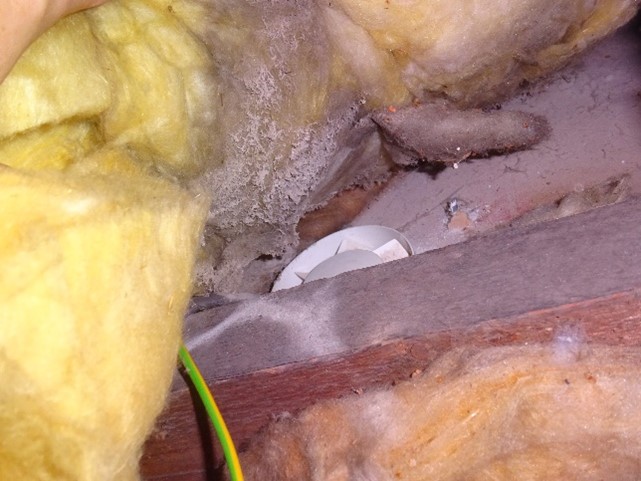
Bathroom fan discharging into a roof space
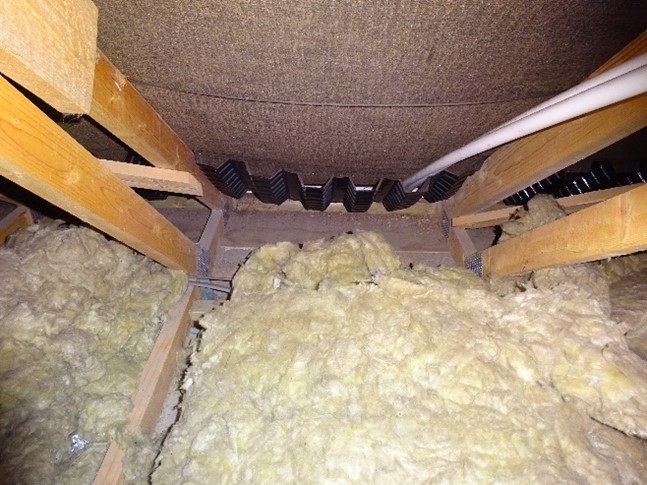
Missing insulation at the eaves causing a cold bridge
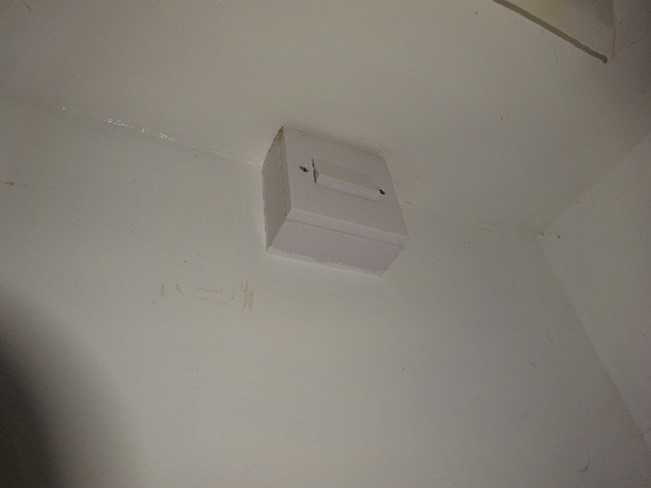
Fan isolator switch turned off
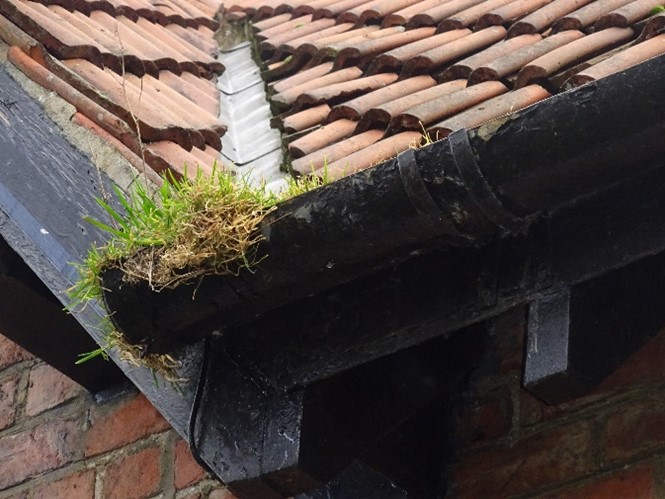
Regular maintenance will prevent damage

